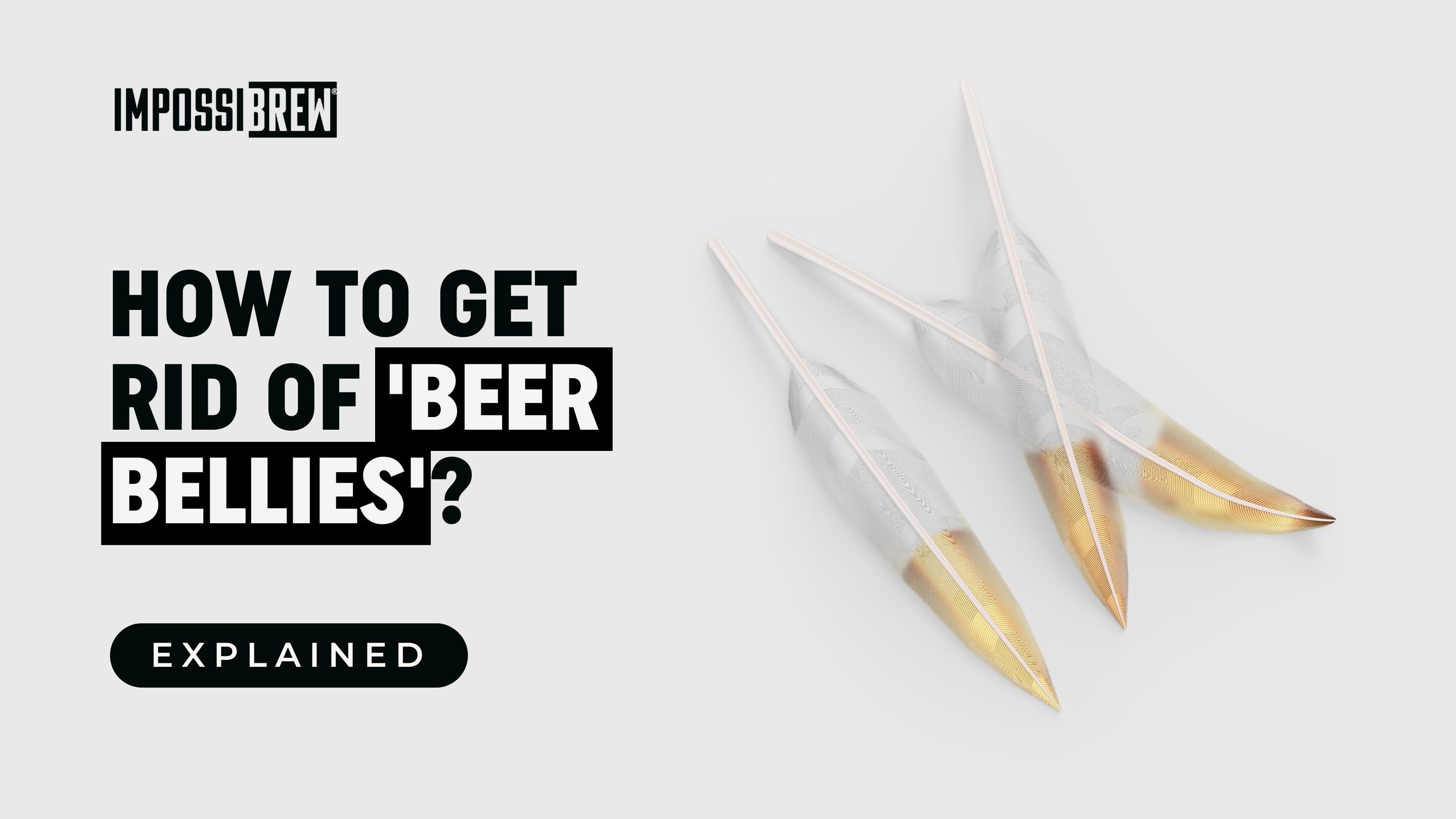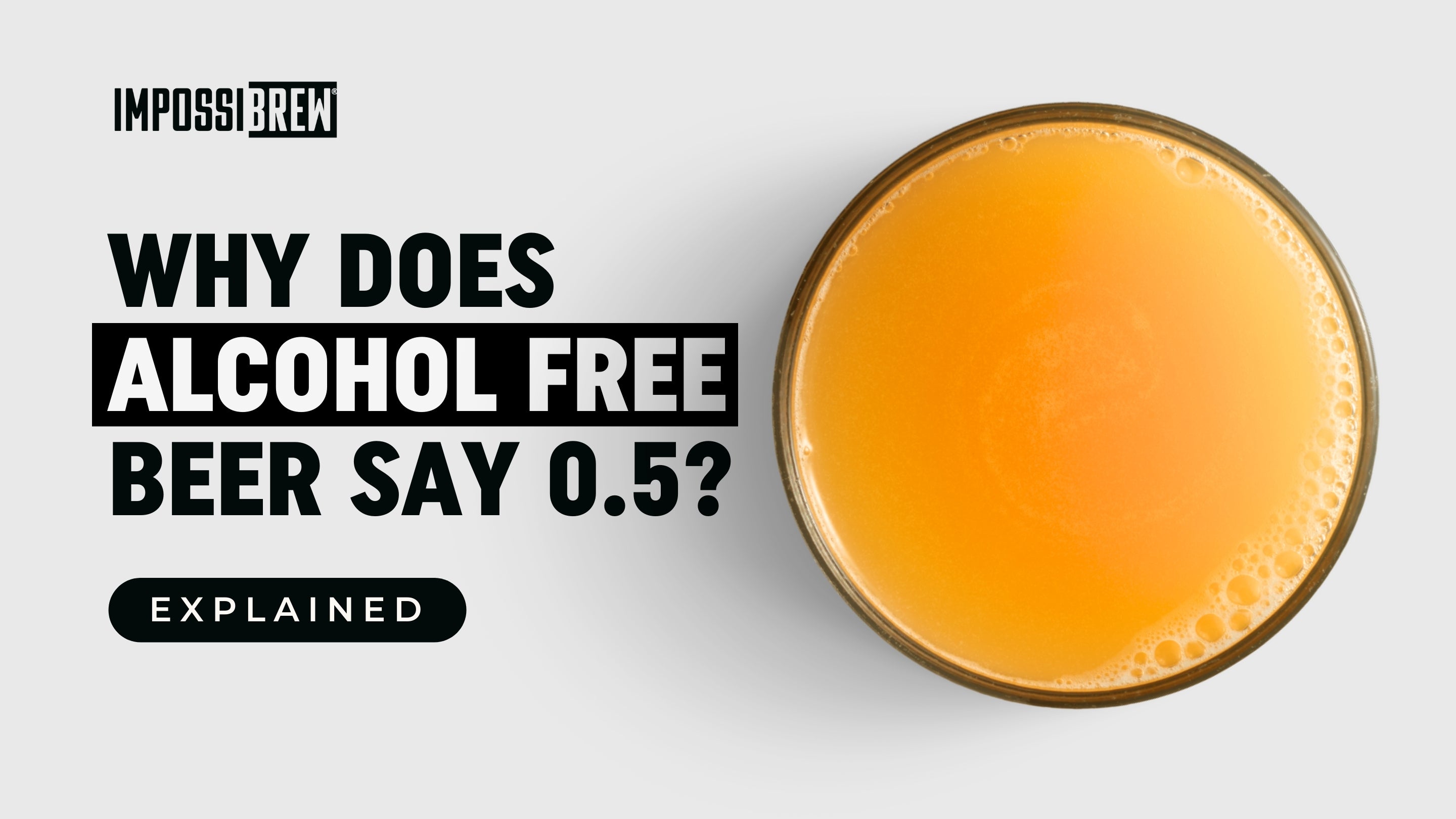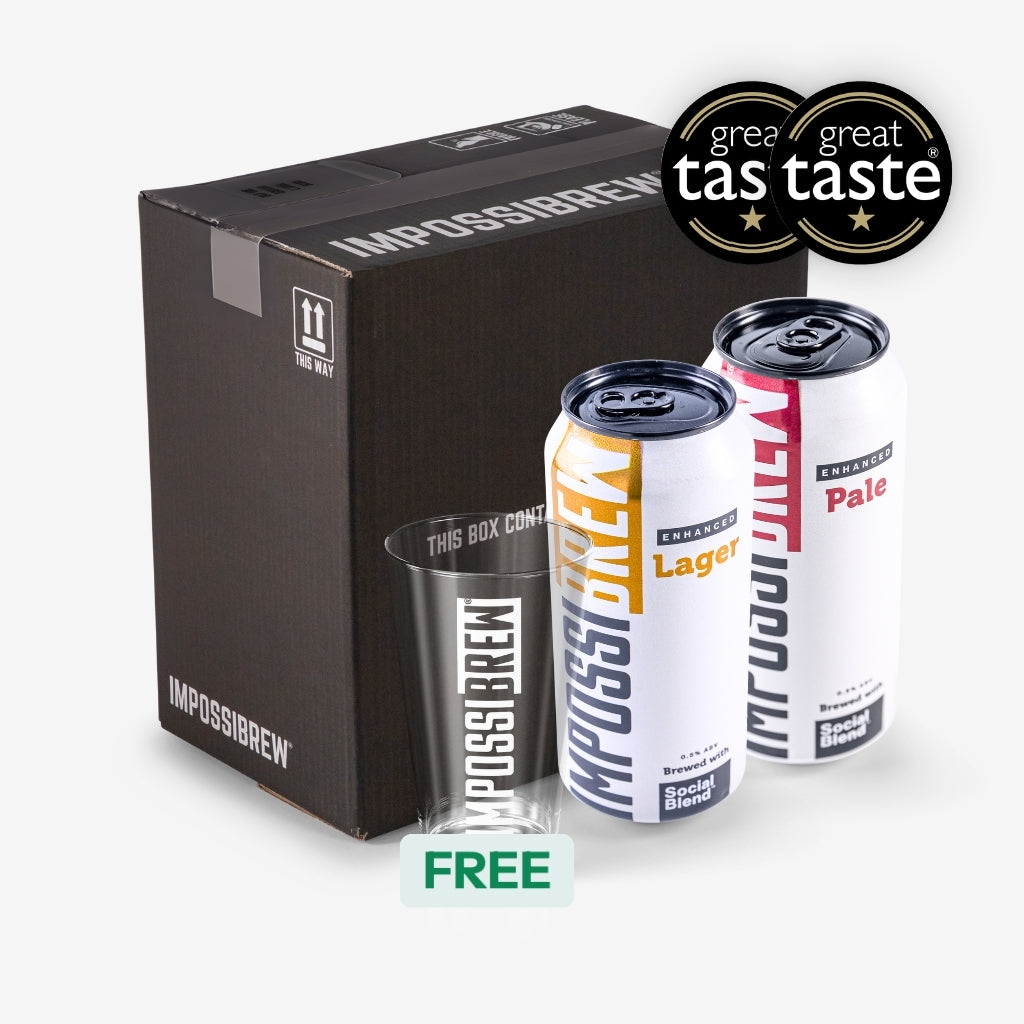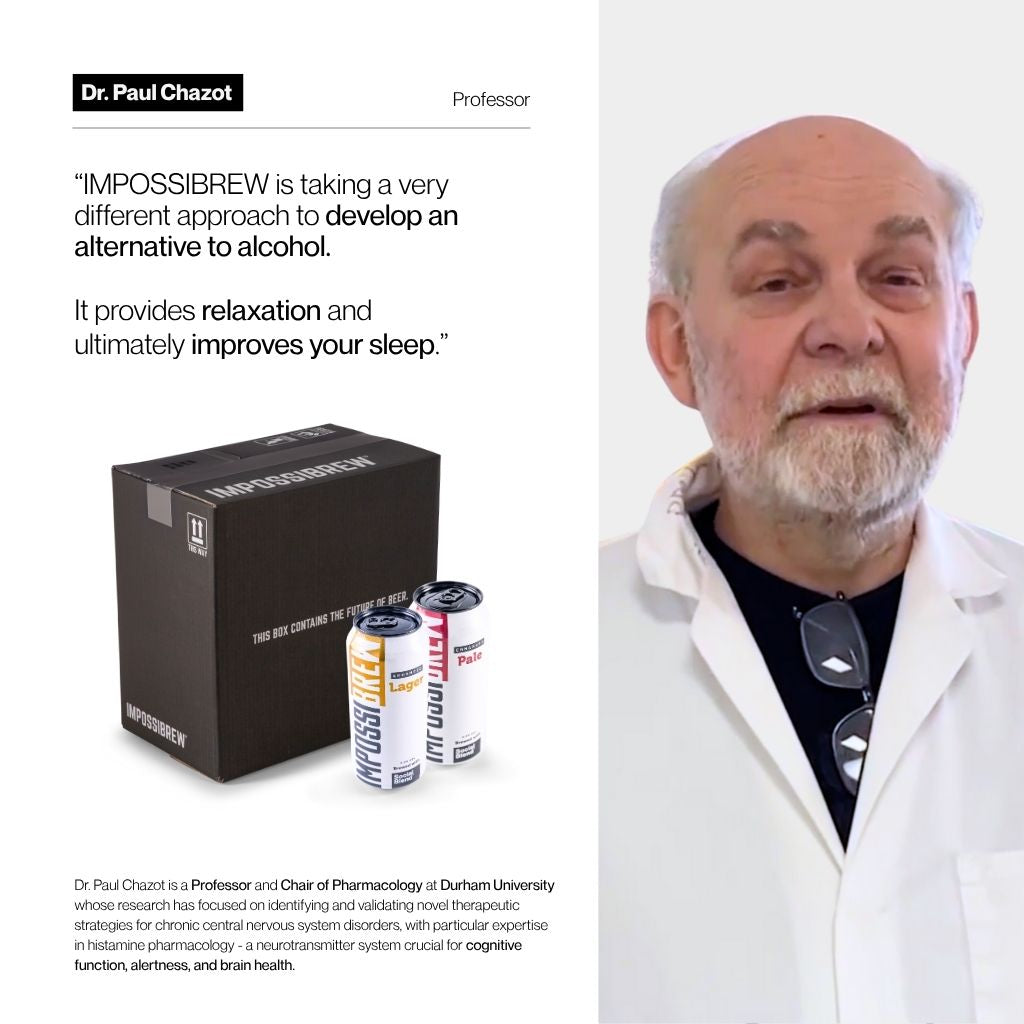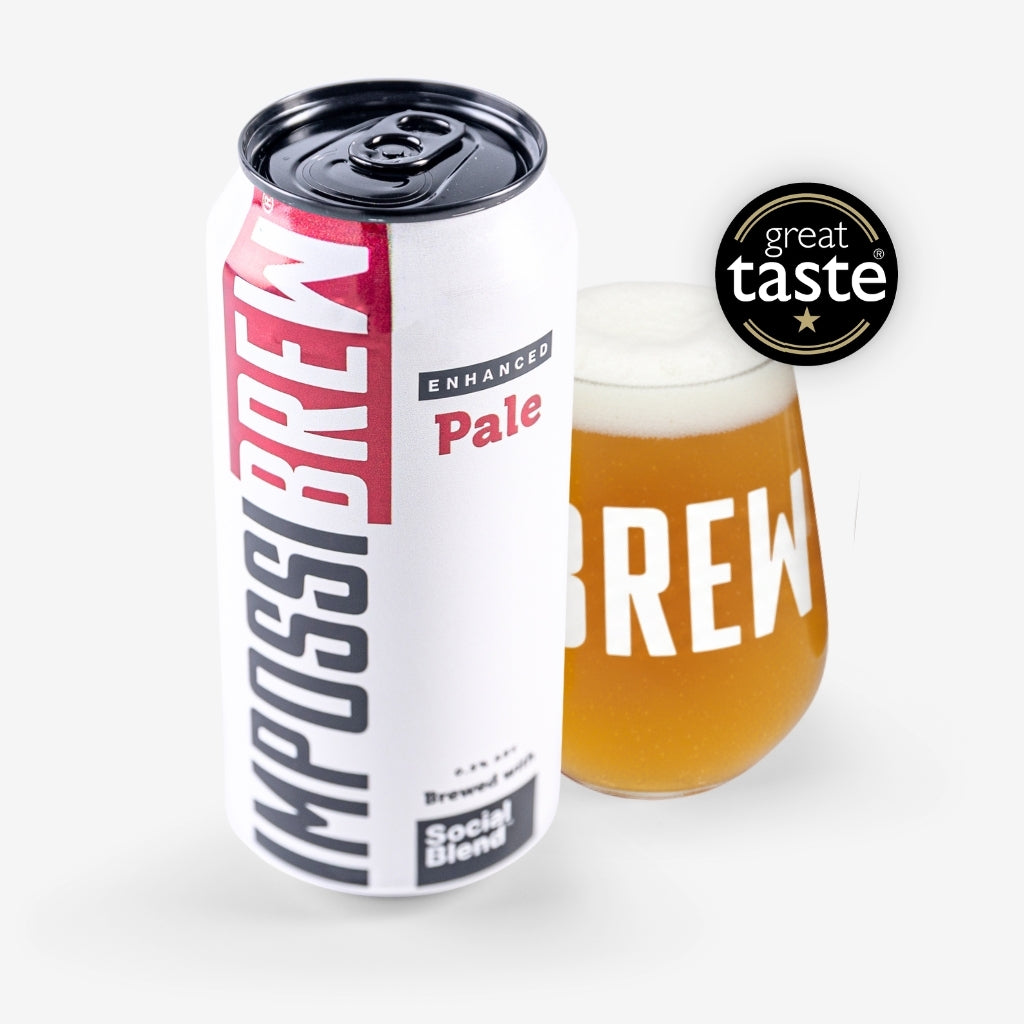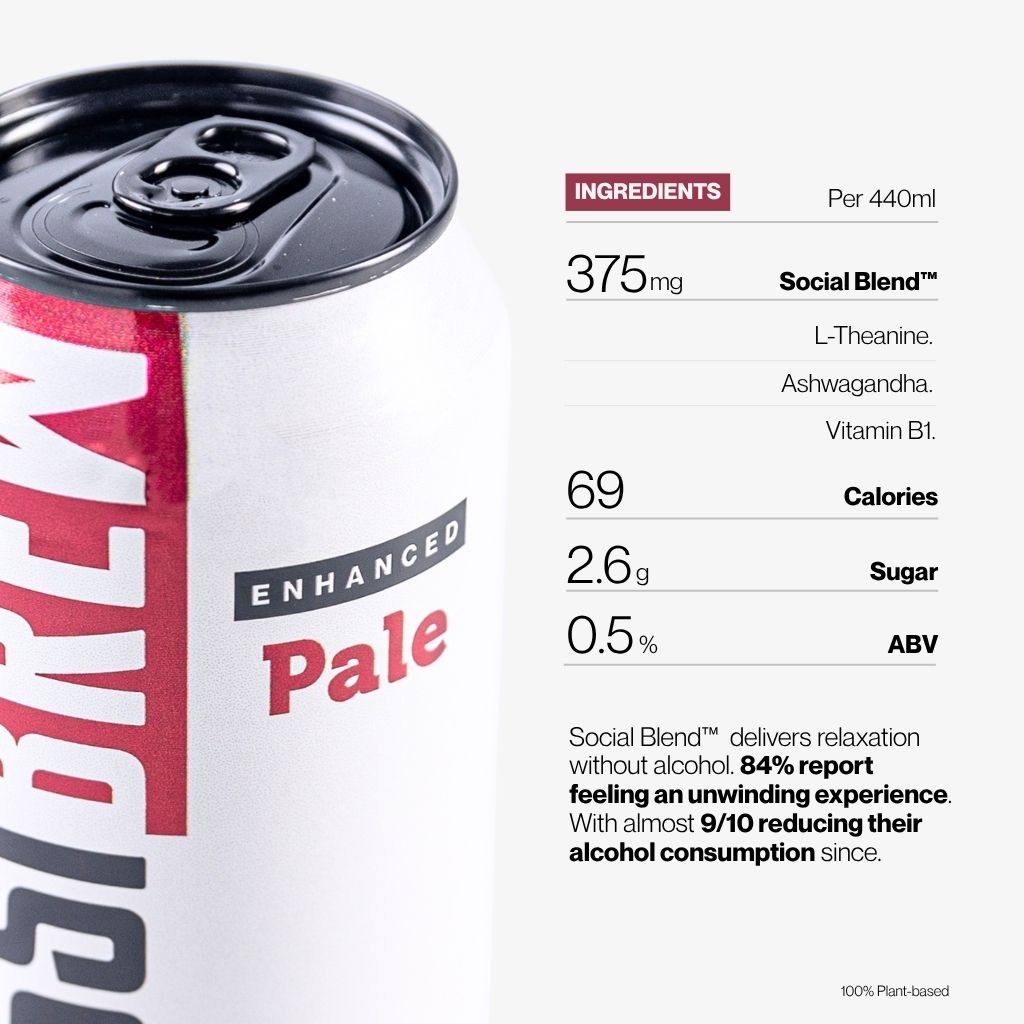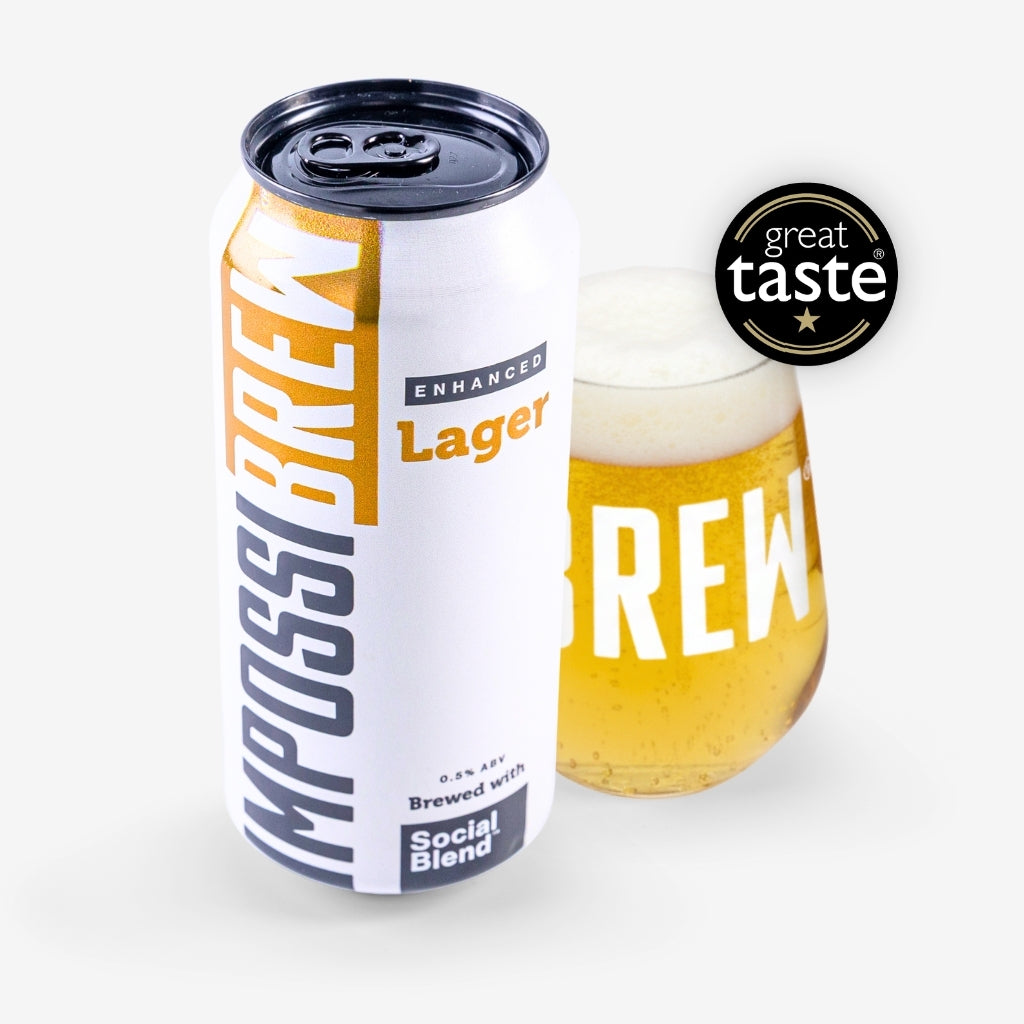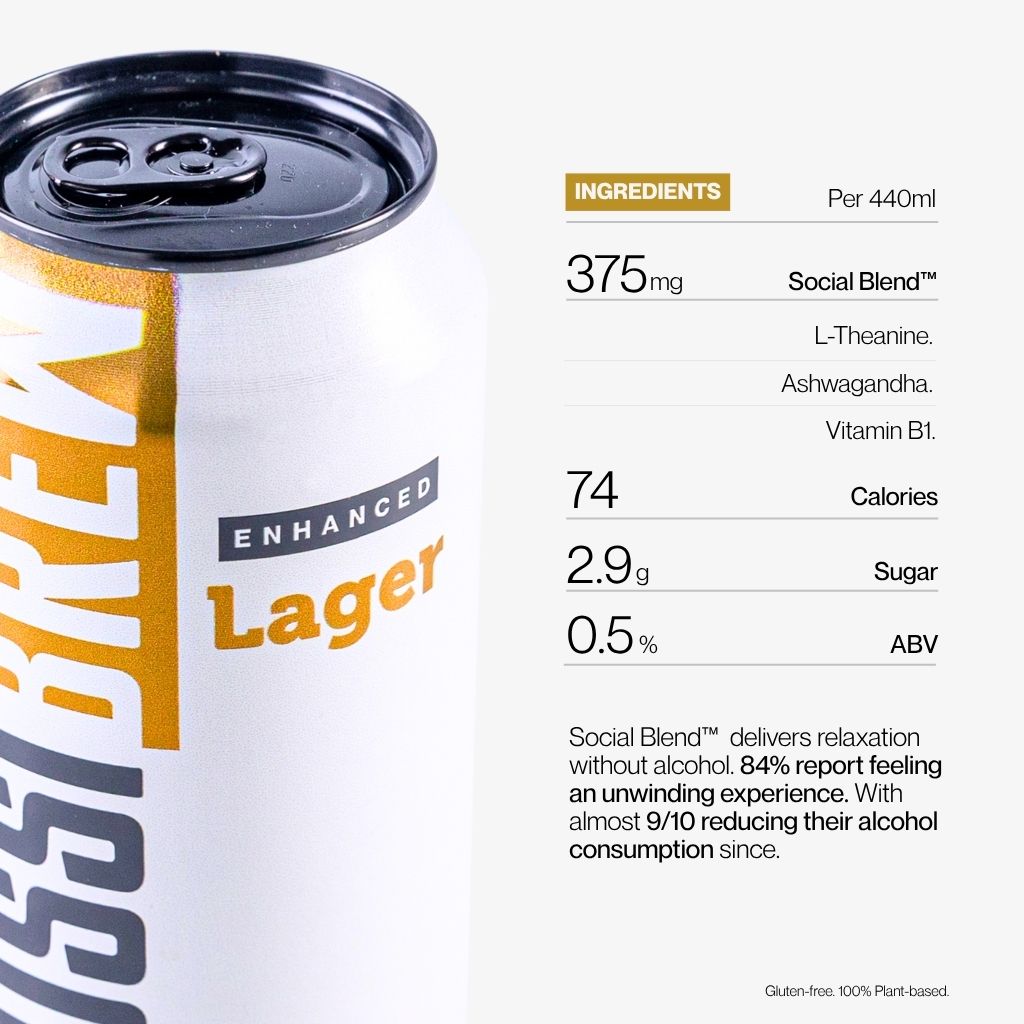Alcohol-Free Beer: How Is It Made?
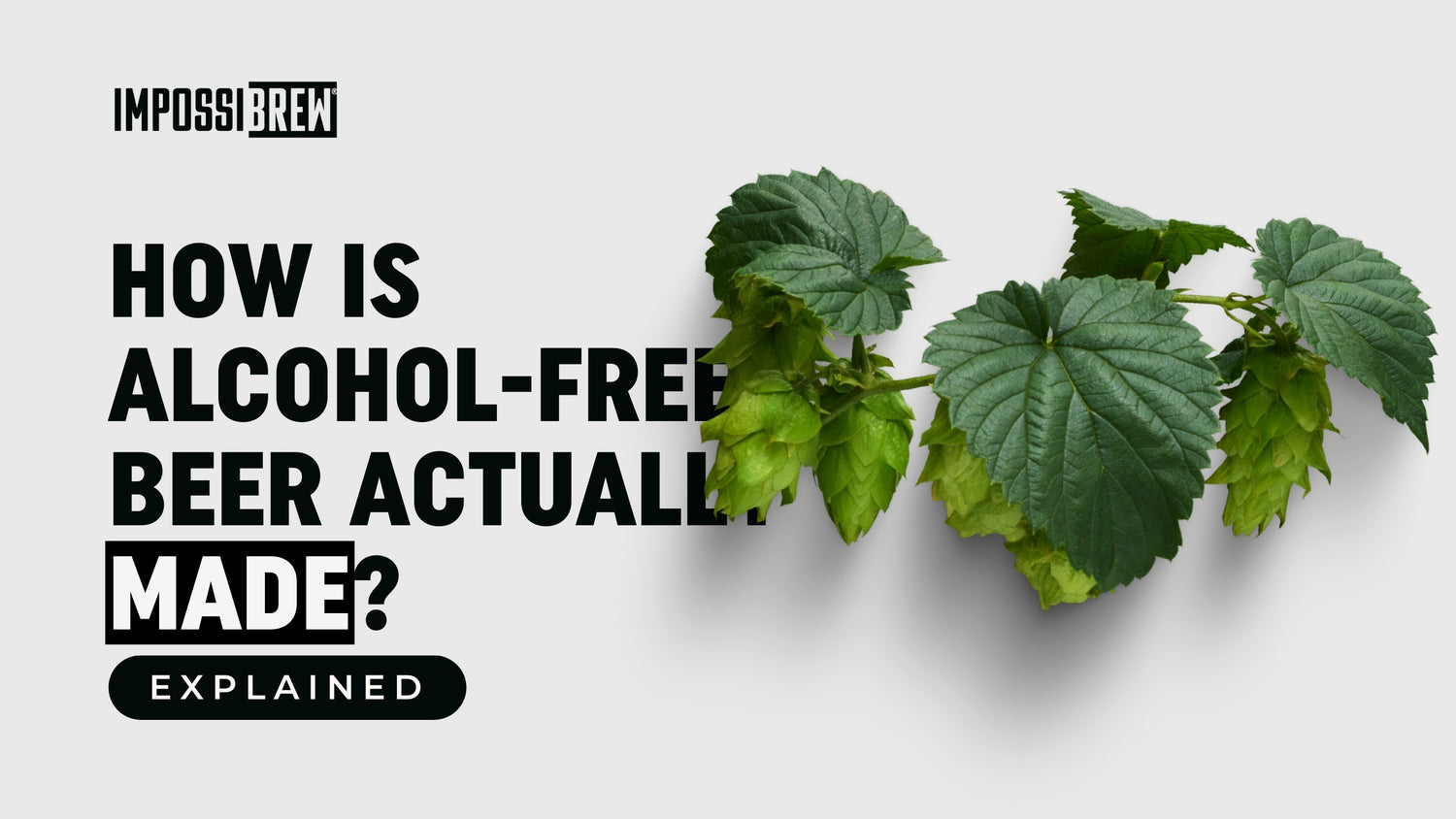
What do you get when you take the alcohol out of beer? A sobering realisation that it's incredibly difficult to make a good brew.
Since their inception, alcohol-free drinks have amazed and even confused a lot of people. Some don't understand the why behind an alcohol-free beer or spirit. Why would someone choose to drink an alcoholic drink without the alcohol?
However, in recent years, adult alcohol alternative drinks have been exploding in popularity. With more than 1 in 5 UK adults no longer drinking and 84% of global drinkers wanting to reduce their intake, many of us are looking for alternatives. With the likes of Heineken and other big breweries getting in on the action after seeing the meteoric success of several craft brands, it seems that alcohol-free beers are here to stay.
How exactly are alcohol-free beers made?
Most alcohol-free beer actually starts out as its regular alcoholic counterpart. This means it goes through almost the entirely same process as regular beer, from making a mash, to boiling the wort, to adding hops and even fermenting. Then, the two veer off in separate directions.
While regular alcoholic beer might be bottled or canned at this point, non-alcoholic beer proceeds through the de-alcoholisation (alcohol-removal) process.
Thermal Extraction
- Removing alcohol via heat
- Good for easy, rapid, cheap production, excellent yield
- Bad for flavour and all-round quality, gives a metallic taste
Years ago, alcohol-free beer was primarily made by boiling the ethanol out of the mixture. Today, some breweries still continue to use this process because it can be cost-effective.
Since alcohol has a much lower boiling point than water, brewers will heat the beer up to approximately 78.3 degrees C and keep it there, until the solution is below 0.5% ABV. However, this process can sometimes have the unfortunate consequence of inhibiting the natural flavours and aromas of the beer, which resulted in some pretty poor tasting beers. This is how most mass-produced alcohol-free beers are made.
However, the benefit of this approach is that you can produce a significant amount of beer at a low price, with an impressive yield by diluting a higher-ABV product - often from 3:1 to 5:1.
Reverse Osmosis
- Removing alcohol via pressure
- Better than Thermal Extraction, good yield
- Bad for retaining body due to tight filtration
One popular technique of removing the alcohol from beer involves reverse osmosis. This technique basically uses extreme pressure to push the already-fermented beer through an extremely tight filter.
The holes in the filter are so small only water, alcohol and volatile acids can fit through. Once through the filter, the alcohol can then be distilled from the mixture by using a standard distillation process.
This process is becoming more popular because it maintains a little more flavour than thermal extraction, while still reducing the alcohol content.
Vacuum Distillation
- Removing alcohol via vacuum
- Better than most other methods other than natural fermentation
- Difficult to get carbonation right and can feel like a 'soft drink'
The third technique brewers use for non-alcoholic beer is vacuum distillation. This process uses a vacuum chamber to lower alcohol’s boiling point as much as possible.
While alcohol’s original boiling point is approximately 78.3 degrees C, the vacuum helps to greatly reduce it. So, instead of heating the beer to the point where it might lose its flavour, the beer only reaches a fairly warm temperature. This allows it to keep its taste intact while still evaporating the alcohol out of the mixture.
Once the beer goes through the de-alcoholisation process, it must be carbonated in order to mimic the texture of alcoholic beer. Most alcoholic beer carbonates itself during the fermentation process inside of the bottle. As yeast metabolises sugar into alcohol, it produces the byproduct carbon dioxide, which gives beer its bubbles.
However, as alcohol-free beer no longer has yeast and is not fermenting, it has no CO2. Therefore, most brewers will inject the drink with CO2 during the canning or bottling process, similar to what companies do with soda.
This finalises the brewing process, and gives us flavourful, alcohol-free beers. However, as it still involves removing alcohol, there will always be a lower concentration of flavour compounds.
Natural Cryogenic Fermentation
- No removing alcohol, restricts fermentation through sub-zero temperatures
- Good for flavour, body and all-round quality
- Expensive to produce, time-consuming and low-yield
The final technique featured is natural cryogenic fermentation, which is also how IMPOSSIBREW®s are made.
It achieves <0.5% ABV through restricting fermentation in tank and tightly-controlling the available amounts of fermentable sugar. By suddenly dropping to sub-zero temperatures, it shocks and disables the natural yeast in the brew and stops any further fermentation beyond alcohol-free.
The benefit of this approach is that it produces the highest quality product, keeping almost all the typical characteristics of a top-level craft beer.
However, the difficulty is that it tends to be expensive to produce (especially without dilution), it is time-consuming and has low yield.
As Mixer Direct says, “Through the new techniques, breweries can create alcohol-free beers with different flavours and aromas.” These techniques allow AF beers to maintain the same delicious taste without any worry about alcohol.
Conclusion
If you choose to live an alcohol-free lifestyle—whether for a short stage in time or for your entire life—alcohol-free beer is the perfect choice to try. With recent adaptations in technology, alcohol-free beer mimics its alcoholic counterpart closer than ever before, and provides the same delicious taste, without any concern for alcohol.
Next Generation Alcohol-Free Beer
IMPOSSIBREW®: The Enhanced Non-Alcoholic Beer designed as an alternative to full ABV beers using patent-pending technology*.
Enjoy a healthier daily wind down with the beer that matches the taste and feeling of traditional alcohol.
Keep the pleasure and ritual of drinking without worrying about your health.
Get Started
Next Generation Alcohol-Free Beer
IMPOSSIBREW®: The Enhanced Non-Alcoholic Beer designed as an alternative to full ABV beers using patent-pending technology*.
Enjoy a healthier daily wind down with the beer that matches the taste and feeling of traditional alcohol.
Keep the pleasure and ritual of drinking without worrying about your health.
Get StartedAward-winning Taste
Rated "UK's Best Non-Alcoholic Beer" by the prestigious World Beer Awards.
From 16 Calories / 100ml
Low Calorie. Low Carb. Vegan-friendly. <0.5% ABV. Gluten-Free (Lager)
Social Blend™
Our proprietary alcohol alternative made from a blend of science-backed ingredients designed to replicate the sensory, social and relaxing experience of drinking. Read more here.
Got Questions?
Find our most commonly asked questions below or ask our AI Brewer for instant answers.
What is IMPOSSIBREW®?
IMPOSSIBREW® is a pioneering non-alcoholic beer brand based in the UK that aims to create the world's most complete alcohol alternative using patent-pending technology.
Founded by Mark Wong in 2021 and working with some of the world's best professors, scientists and expert brewers, IMPOSSIBREW® specialises in expertly crafted non-alcoholic beers designed to match full ABV beers in both taste and feeling.
Product Range
IMPOSSIBREW® offers a range of enhanced non-alcoholic beers, including:
- Enhanced Lager (0.5% ABV)
- Enhanced Pale Ale (0.5% ABV)
- Limited Editions (Seasonal)
Key Benefits
The key feature that sets IMPOSSIBREW® apart is its proprietary "Social Blend™" - a combination of active botanical ingredients and nootropics using patent-pending technology* designed to recreate the relaxing effects of alcohol without the negative side effects.
Along with record-breaking quality flavour that comes from a unique process without removing alcohol.
Social Blend™ Ingredients
Developed with leading scientists in top UK universities, Social Blend™ includes:
- L-Theanine
- Ashwaghanda
- Soluble Plant Fibres
- Vitamin B1
- Various Plant Extracts.
These ingredients are chosen for their potential to boost serotonin, promote relaxation, and create a calming effect similar to the "one or two pint feeling" without hangovers.
See more details on our very own research paper, with over 1,000 participants:
- More than 70% said they felt relaxed after consuming IMPOSSIBREW®.
- 88% have reduced alcohol consumption since discovering IMPOSSIBREW®.
- 95% have told a friend about IMPOSSIBREW® after trying.
- 3/4 say that IMPOSSIBREW® is "the most complete alcohol alternative currently available on the market today".
Recognition
IMPOSSIBREW® has received several notable achievements:
- Featured on BBC's Dragons' Den
- Awarded the first and only Gold Medal in the No/Low beer category from the London Beer Competition
- Received multiple industry Gold awards in categories against Full-ABV beers
- Most followed No/Low Alcohol brand on TikTok globally.
Mission and Vision
IMPOSSIBREW® is on a mission to redefine non-alcoholic drinking by creating better-than-alcohol alternatives for those who love beer but want to avoid the health risks associated with alcohol consumption.
The company aims to become the global leading alcohol alternative brand, focusing on helping people transition to a healthier mode of relaxation without the traditional issues and side effects of alcohol.
Production and Ingredients
IMPOSSIBREW® combines traditional brewing methods with their proprietary Social Blend™ along with patent-pending technology*
The beers are made with traditional brewing ingredients such as water, malted barley, wheat, hops, and yeast, in addition to the Social Blend™ components - leveraging their unique cryogenic fermentation process, which means no alcohol is ever removed from the product - ensuring the most authentic quality taste you've come to expect.
Who is it for?
IMPOSSIBREW® caters to consumers who:
- Are busy professionals and parents who would like to unwind with a drink but don't want the hangovers.
- Enjoy the taste and relaxing experience of beer
- Are looking for healthier alternatives to alcohol, with lower calories, carbs and sugar
- Want to avoid hangovers and other negative effects of alcohol consumption
- Are interested in functional beverages with potential mood-enhancing properties
By offering a unique product that aims to replicate both the taste and feeling of alcoholic beer, IMPOSSIBREW® is positioning itself at the forefront of the growing non-alcoholic beverage market.
Get Started Today
Give it a try today with our Welcome Bundle and get 2 Free Beers with your first purchase. Get it delivered straight to your door, risk-free with our 30-day money-back guarantee.
We hope you enjoy them as much as we do and we can't wait for you to try.
*Patent pending in the UK under application number GB2415685.3
How does 'Social Blend™' work?
Social Blend™ is our proprietary alcohol alternative made from a blend of science-backed ingredients using patent-pending technology*.
Designed to replicate the sensory and social relaxing experience of drinking, minus the headaches (and bad decisions).
Developed with Dr Paul Chazot, Bioscience Professor and Chair of Pharmacology at Durham University.
Key Components and Mechanisms
- L-Theanine:
- Ashwagandha Root:
- Vitamin B1 (Thiamine):
- Various nootropic herbs:
Benefits
- Relaxation: The blend promotes a state of relaxation without the sedative effects typically associated with alcohol.
- Mental Calm: By boosting alpha brain waves and serotonin levels, it helps maintain a calm and focused mental state.
- Stress Relief: The combination of L-Theanine, Ashwagandha, and Vitamin B1 helps mitigate stress and anxiety.
- Mood Enhancement: The inclusion these ingredients and other botanicals supports mood regulation and overall positive outlook.
IMPOSSIBREW®'s Social Blend™ is a carefully crafted combination of nootropic and adaptogenic ingredients designed to offer a relaxing and mood-enhancing experience without the drawbacks of alcohol. It leverages the natural properties of its components to promote relaxation, reduce stress, and enhance mood, making it a unique alternative to traditional alcoholic beverages.
(Read our latest research paper here)
*Patent pending in the UK under application number GB2415685.3
Do you ship overseas?
We ship to the UK Mainland for free when you spend over £35
We aim to expand internationally soon - stay tuned!
If you have any queries, feel free to email: hello(@)impossibrew.co.uk
How long will it take to get my orders?
For UK mainland deliveries, normal orders processed here will take 1-3 business days to arrive, with an optional upgrade to Next Day Delivery available (12pm cut-off).
Delivery details will be provided in your confirmation email.
How is 0.5% ABV alcohol-free?
Yes, we know it's confusing. Isn't 0.5% ABV still alcoholic? Officially, 0.5% ABV is classified as Dealcoholised.
- In fact, most things we consume daily have more than 0.5% ABV
- Burger Rolls - 1.2% ABV
- Orange Juice - 0.5% ABV
- Ripe Banana - 0.5% ABV
After more than 2 years of research, we've found that the 0.5% ABV from our natural brewing process significantly increases both flavour and mouthfeel - without spiking your blood alcohol level (BAC).
Is it really gluten-free?
Yes, IMPOSSIBREW® Enhanced Lager is gluten-free. Even though it contains wheat and barley, our beers have been third-party tested to contain less than 10 parts per million (PPM) of gluten, which meets the criteria to be listed as, and labeled gluten-free.
Does it have alcohol tax?
No. While it is true that our beers don't contain alcohol, and thus don't incur UK alcohol duty, we'd like to highlight some factors here that might be helpful in reflecting the value we provide.
- One-to-One Brewing Process: At IMPOSSIBREW, we take pride in our unique brewing techniques. Unlike other non-alcoholic beers, our products are never diluted, watered-down, or have their alcohol content removed - and some even dilute their alcoholic beers up to 5x. This means that our brewing process involves the same level of craftsmanship, time, and resources as a traditional craft beer, resulting in comparable production costs.
- Effective Nootropics: In our commitment to creating the most relaxing non-alcoholic beers, we utilise only the highest quality nootropics as our active ingredients, in safe and effectives dosages. At current alcohol tax rates for a 5% ABV beer, the cost of our nootropics more than double that. Instead of contributing the amounts as tax, why not have it contribute to the product quality itself?
- Small Scale Brewing: Currently, we operate on a smaller scale, which makes us less competitive than large, commercial brewers (often +10,000x our brewing size). As a growing business, we are passionate about our mission to create unique, high-quality non-alcoholic experiences, and we truly appreciate your support. As we continue to grow and expand our production capabilities, we look forward to passing on even more savings to our valued community!
At IMPOSSIBREW, we prioritise offering our customers an enhanced, premium, non-alcoholic beer experience by combining innovative brewing techniques, quality active nootropic ingredients, and award-winning taste. While our pricing may differ from other non-alcoholic competitors, we believe that the value proposition and unique experience our beers provide are well worth it.
At the end of the day, tasting is believing. So give it a try and let us know what you think - risk-free with our IMPOSSIBREW® Guarantee.
Who shouldn't drink IMPOSSIBREW®?
It is not recommended for pregnant or breastfeeding women, those with certain medical conditions like GI disorders or hypertension, or individuals taking specific medications such as antidepressants, immunosuppressants or blood thinners. If you fall into any of these categories, it's best to consult with your doctor first.
Ashwagandha can lead to overstimulation (i.e. restlessness) if taken alongside thyroid medication.
What is your philosophy?
For thousands of years, we had only one way to unwind together. One way to let our guards down. One way to bridge the gap between who we are and who we are with others.
Not because it was perfect. But because it was all we had.
We decided that wasn't good enough.
We exist because we believe in a world where social connection doesn't demand compromise.
Where being present with others doesn't mean being absent from yourself. Where letting go doesn't mean losing control.This isn't about removing alcohol. This is about something better.
Our Social Blend™ technology isn't an accident. It's the result of questioning everything we thought we knew about social drinking. About working with scientists to understand what we're really seeking in these moments of connection. About daring to imagine something that wasn't possible before.
We believe the greatest innovations don't just solve problems - they change how we live. They make us question why we ever settled for less.
That's what we're building. Not just a drink, but a new way forward. A future where social connection comes without compromise. Where tradition meets innovation. Where science meets ritual.
This is the future of social drinking.
Got more questions?
Speak to our AI Brewer here for instant answers.
Or email us at hello@impossibrew.co.uk
Our customer support is available Monday to Friday: 9am - 5:30pm.

















